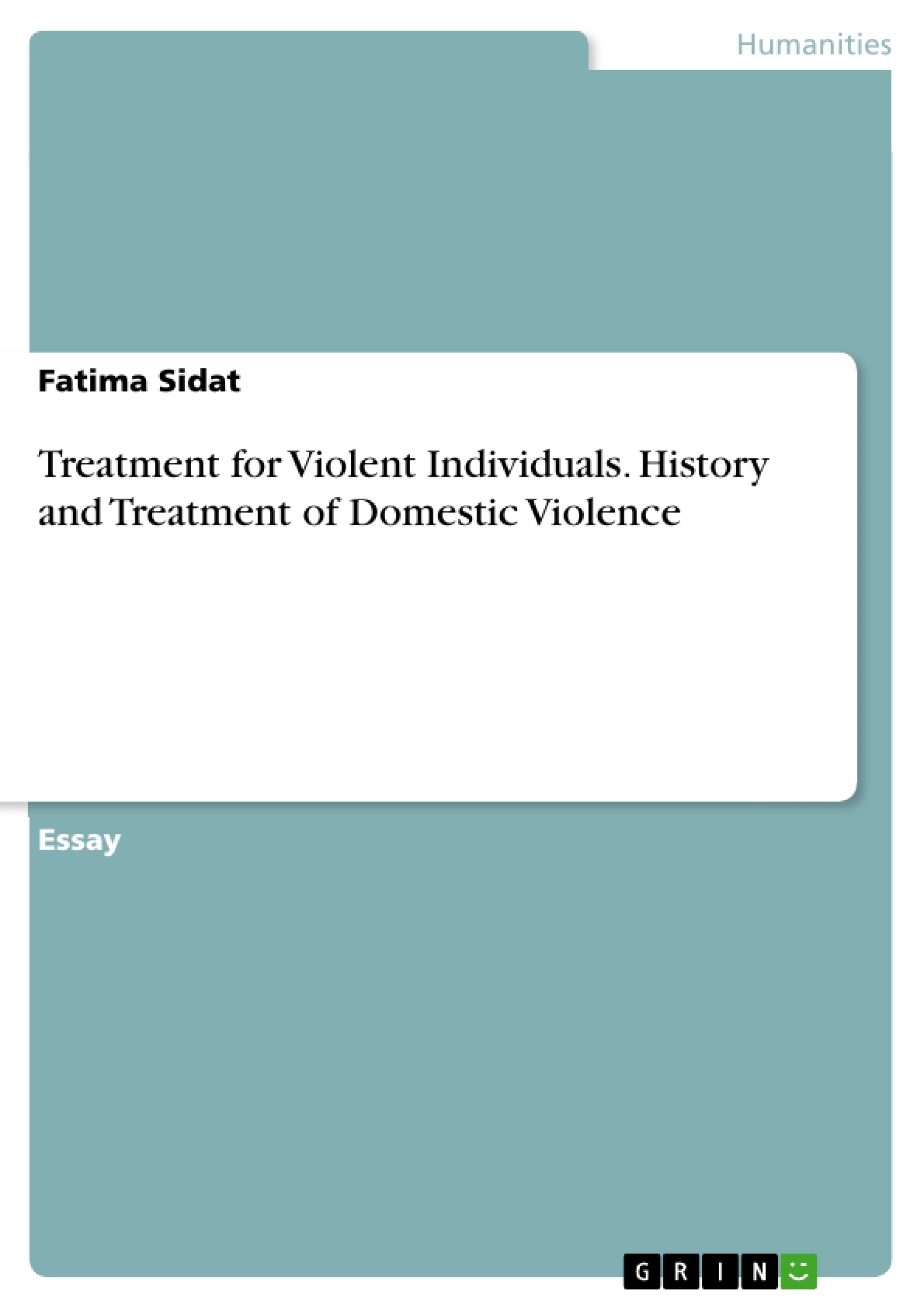Violence within a criminal setting produces some interesting questions, both in terms of how the criminal justice system can look to manage and reduce the impact of violence on society, as a whole, but also within the family setting. The purpose of this paper is to consider the generic question about whether treatment is the best way to deal with violent individuals, with particular reference to the issues associated with domestic violence. By looking at this area of violence, there is the opportunity to consider wider social and psychological issues associated with violent conduct.
This paper will firstly look at the definitions of domestic violence and the way in which the policies and criminal procedures have evolved to deal with this area. Any difficulties with the issues of domestic violence will be discussed, recognising that domestic violence often needs to be looked at in a wider context than simply looking at one immediate criminal activity, as it is often seen to be a repeated situation within the family setting.
Inhaltsverzeichnis (Table of Contents)
- Introduction, Aims and Objectives
- History of Understanding of Domestic Violence
- Treatment of Domestic Violence
Zielsetzung und Themenschwerpunkte (Objectives and Key Themes)
This paper explores the effectiveness of treatment for individuals involved in domestic violence, examining the complexities of this specific type of criminal behavior and its impact on the family unit. The paper aims to analyze whether treatment is the best approach to address domestic violence, considering the broader social and psychological factors that contribute to this issue.
- Definition and evolution of domestic violence
- Treatment options and their effectiveness
- The role of psychology and social factors in domestic violence
- The importance of multi-agency approaches
- The need for long-term treatment and rehabilitation
Zusammenfassung der Kapitel (Chapter Summaries)
- Introduction, Aims and Objectives: This chapter introduces the topic of domestic violence and its unique characteristics within the context of criminal violence. It outlines the paper's objective to examine the effectiveness of treatment for perpetrators of domestic violence, taking into account the broader social and psychological factors involved.
- History of Understanding of Domestic Violence: This chapter explores the historical evolution of understanding and responding to domestic violence. It examines the changing definitions of domestic violence, the role of police and policy responses, and the recognition of its complex nature, including the prevalence of repeated offenses and the need for multi-agency approaches.
- Treatment of Domestic Violence: This chapter delves into the various treatment options available for individuals involved in domestic violence. It discusses the limitations and complexities of traditional treatment approaches, including biological interventions, psycho-analytical therapy, behavioral therapy, and anger management. It also highlights the importance of considering the long-term implications of domestic violence and the need for comprehensive treatment plans that address the underlying social and psychological factors.
Schlüsselwörter (Keywords)
Domestic violence, treatment, criminal justice, family violence, psychology, social factors, multi-agency approach, rehabilitation, victim empowerment, perpetrator treatment, relationship dynamics.
- Quote paper
- Fatima Sidat (Author), 2013, Treatment for Violent Individuals. History and Treatment of Domestic Violence, Munich, GRIN Verlag, https://www.grin.com/document/316340



